
The World Cinema Project (WCP) preserves and restores neglected films from around the world. To date, 67 films from Africa, Asia, Eastern Europe, Central America, South America, and the Middle East have been restored, preserved and exhibited for a global audience. The WCP also supports educational programs, including Restoration Film Schools; intensive, results-oriented workshops allowing students and professionals worldwide to learn the art and science of film restoration and preservation. All WCP titles are available for exhibition rental by clicking "Book This Film."
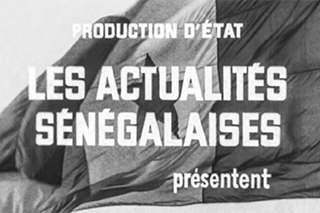
VOYAGE AUX ANTILLES DU PRÉSIDENT SENGHOR
Director: Georges Caristan
COUNTRY OF PRODUCTION: Senegal
LANGUAGE: French with English subtitles
COLOR INFO: Black and White
RUNNING TIME: 17 minutes
Restored by The Film Foundation’s World Cinema Project and Cineteca di Bologna at L’Immagine Ritrovata laboratory, in collaboration with the Ministère de la Culture et du Patrimoine Historique de Sénégal – Direction du Cinéma. Restoration funded by the Hobson/Lucas Family Foundation.
This restoration is part of the African Film Heritage Project, an initiative created by The Film Foundation's World Cinema Project, the Pan African Federation of Filmmakers and UNESCO―in collaboration with Cineteca di Bologna―to help locate, restore, and disseminate African cinema.
NOTES ON THE RESTORATION:
The 4K restoration was completed using a 16mm print preserved by the Direction du Cinéma in Senegal. With special thanks to Tiziana Manfredi and Marco Lena.

GHATASHRADDHA
Director: Girish Kasaravalli
WRITTEN BY: Girish Kasaravalli, K.V. Subanna
EDITING: Umesh Kulkarni
DIRECTOR OF PHOTOGRAPHY: S. Ramachandra
STARRING: Narayan Bhatt, Ramaswamy Iyengar, Janganath, Ajith Kumar, Shanta Kumari, Meena Kuttappa, Ramakrishna, Suresh
COUNTRY OF PRODUCTION: India
LANGUAGE: Kannada
COLOR INFO: B&W
RUNNING TIME: 115 minutes
Restored by The Film Foundation’s World Cinema Project and Film Heritage Foundation at L’Immagine Ritrovata laboratory in association with Girish Kasaravalli. Funding provided by the Hobson/Lucas Family Foundation.
NOTES ON THE RESTORATION:
Restored using the 35mm original camera negative preserved at the NFDC-National Film Archive of India and a 35mm print preserved at the Library of Congress.
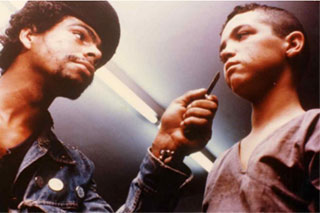
PIXOTE
PIXOTE, A LEI DO MAIS FRACO
Director: Héctor Babenco
WRITTEN BY: Héctor Babenco, Jorge Durán
EDITING: Luiz Elias
DIRECTOR OF PHOTOGRAPHY: Rodolfo Sanchez
PRODUCER: Sylvia B. Naves, Paulo Francini, José Pinto
ART DIRECTOR: Clóvis Bueno
STARRING: Fernando Ramos da Silva (Pixote), Jorge Julião (Lilica), Gilberto Moura (Dito), Edilson Lino (Chico), Zenildo Oliveira Santos (Fumaça), Claudio Bernardo (Garatao), Israel Feres David (Roberto Pie de Plata), Jose Nilson Martin Dos Santos (Diego), Marília Pêra (Sueli)
COUNTRY OF PRODUCTION: Brazil
LANGUAGE: Portuguese with English subtitles
COLOR INFO: Color
RUNNING TIME: 128 Minutes
PRODUCTION COMPANY: Embrafilme, HB Filmes
PRODUCER: Sylvia B. Naves, Paulo Francini, José Pinto
Restored by The Film Foundation’s World Cinema Project and Cineteca di Bologna at L'Immagine Ritrovata in association with HB Filmes, Cinemateca Brasileira, and JLS Facilitações Sonoras. Restoration funded by the Hobson/Lucas Family Foundation.
NOTES ON THE RESTORATION:
Restored in 4K from the 35mm original camera negative and a first generation 35mm dupe negative preserved at the Cinemateca Brasileira. In order to minimize the overall presence of mold, particularly invasive in reels 3, 5 and 6, the camera negative was wet-gate scanned at 4K resolution and digital restoration required considerable efforts. Missing frames in three different shots of reel 3 were replaced using the internegative.
The recently rediscovered original magnetic soundtrack, also affected by mold, with the oxide peeling off the base, was carefully repaired by Beto Ferraz then digitized and restored by José Luiz Sasso (ABC), sound engineer for Hector Babenco in 1981. Final color grading was supervised by cinematographer Rodolfo Sánchez using a first generation vintage 35mm print as reference.
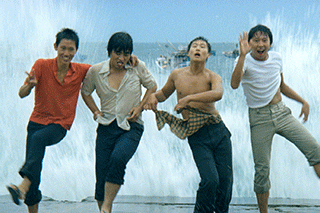
BOYS FROM FENGKUEI, THE
FENG GUI LAI DE REN
Director: Hou Hsiao-hsien
WRITTEN BY: T'ien-wen Chu
DIRECTOR OF PHOTOGRAPHY: Kun Hao Chen
SOUND: Duu-Chih Tu
STARRING: Chun-fang Chang, Shih Chang, Doze Niu, Chao P'eng-chue, Chung-Hua Tou, Li-Yin Yang
COUNTRY OF PRODUCTION: Taiwan
LANGUAGE: Mandarin with English subtitles
COLOR INFO: Color
RUNNING TIME: 101 minutes
Restored by the Cinémathèque Royale de Belgique in collaboration with Hou Hsiao-hsien and The Film Foundation’s World Cinema Project.
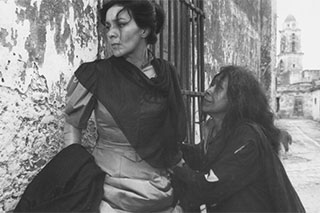
LUCIA
Director: Humberto Solás
WRITTEN BY: Humberto Solás, Julio Garcia Espinosa, Nelson Rodríguez
EDITING: Nelson Rodríguez
DIRECTOR OF PHOTOGRAPHY: Jorge Herrera
PRODUCER: Raúl Canosa, Camilo Vives
PRODUCTION DESIGN: Pedro Garcia Espinosa, Roberto Miqueli
STARRING: 1895: Raquel Revuelta (Lucía); Eduardo Moure (Rafael); Idalia Anreus (Fernandina); 1932: Eslinda Nuñez (Lucía); Ramón Brito (Aldo); Flora Lautén (Flora); 196..: Adela Legrá (Lucía); Adolfo Llauradó (Tomás); Teté Vergara (Angelina)
COUNTRY OF PRODUCTION: Cuba
LANGUAGE: Spanish
COLOR INFO: Black and White
RUNNING TIME: 160 minutes
PRODUCTION COMPANY: Instituto Cubano del Arte e Industria Cinematográficos (ICAIC)
PRODUCER: Raúl Canosa, Camilo Vives
Restored by Cineteca di Bologna at L’Immagine Ritrovata laboratory in association with Instituto Cubano del Arte e Industria Cinematográficos (ICAIC). Restoration funded by Turner Classic Movies and The Film Foundation’s World Cinema Project.
One of the abilities of cinema is to portray what a country is going through… it is about putting the country’s face on the screen, but it’s also about enlarging one’s vision of that specific place.
-- Walter Salles
ICAIC was born out of the victory of the Revolution. Those of us who were about to attempt to found a national film industry from scratch faced a set of problems that we had to resolve immediately. Our problem was a basic cultural dichotomy, as in Lenin’s thesis on national cultures. We had an elitist cultural tradition that represented the interests of the dominant class, and a more clandestine culture that had already received wide exposure; however, at some point, all artistic expression started to be converted into products of a consumer-oriented culture.
Because the elitist and the popular were so intimately tied, because petit bourgeois consciousness and influences from Europe and North America were so dominant, our general cultural panorama at the time of the Revolution was in fact a pretty desolate one. This was during the sixties, when the most important film movement was the French New Wave. Films like Alain Resnais’ Hiroshima mon amour (1959) or Michelangelo Antonioni’s L’Avventura (1960) marked most of the subsequent decade. These influences alienated us from our indigenous cultural forms and from a more serious search for a kind of cultural expression consistent with national life and with the explosive dynamism of the Revolution. Yet this was a path we clearly had to travel. Anyone who picks up the tools of artistic activity for the first time is going to be vulnerable to outside influences.
With Lucía, I wanted to view our history in phases, to show how apparent frustrations and setbacks –such as the decade of the ’30s–led us to a higher stage of national life. Whenever you make a historical film, whether it’s set two decades or two centuries ago, you are referring to the present.
Lucía is not a film about women, it’s a film about society. But within society, I chose the most vulnerable character, the one who is more transcendentally affected at any given moment by contradictions and change.
-- Humberto Solás
NOTES ON THE RESTORATION:
The restoration of Lucía was made possible through the use of the original camera and sound negative and a third generation dupe negative provided by and preserved at the ICAIC.
The state of conservation of the negative was critical, due to advanced vinegar syndrome causing portions of the film stock to colliquate (melt) or stick together; the negative also appeared heavily warped and buckled, causing the image to lose focus throughout the film. Despite undergoing several weeks of drying and softening treatments, large portions of 8 (out of 18) reels could not be used. These sections were replaced with a second generation duplicate preserved by the Bundesarchiv-Filmarchiv since
the film had been distributed in East Germany in the late 1960s.
All the elements were wet-scanned at a 4K resolution to eliminate or reduce heavy scratches and halos. Additional documentation was used to confirm that the film had been shot on two different film stocks–Orwo and Ilford–and graded according to the time-period depicted in the film. A previously unscreened vintage print preserved at the BFI National Archive was used as a reference.
The original soundtrack was in fairly good condition, with the exception of uneven and inconsistent background noise detected in
the mix which required careful dynamic noise reduction.
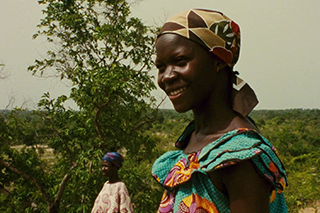
YAM DAABO
Director: Idrissa Ouédraogo
WRITTEN BY: Idrissa Ouédraogo
EDITING: Arnaud Blin
DIRECTOR OF PHOTOGRAPHY: Jean Monsigny
STARRING: Moussa Blogo, Aoua Guiraud, Assita Ouedrago, Fatima Ouedrago, Omar Ouedrago, Salif Ouedrago , Rasmané Ouedraogo
COUNTRY OF PRODUCTION: Burkina Faso
COLOR INFO: Color
RUNNING TIME: 80 minutes
Restored by The Film Foundation’s World Cinema Project and Cineteca di Bologna at L’Immagine Ritrovata laboratory, in collaboration with Les Films de la Plaine and the family of Idrissa Ouédraogo.
Restoration funded by the Hobson/Lucas Family Foundation.
This restoration is part of the African Film Heritage Project, an initiative created by The Film Foundation's World Cinema Project, the Pan African Federation of Filmmakers and UNESCO―in collaboration with Cineteca di Bologna―to help locate, restore, and disseminate African cinema.
NOTES ON THE RESTORATION:
YAM DAABO was restored in 4K using the 16mm original camera negative and magnetic sound. Color grading was finalized with the help of director of photography Sekou Ouedraogo.
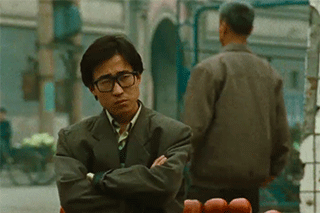
PICKPOCKET
XIAO WU
Director: Jia Zhang-ke
WRITTEN BY: Jia Zhang-ke
EDITING: Lin Xiao Ling
DIRECTOR OF PHOTOGRAPHY: Yu Lik Wai
PRODUCER: Li Kit Ming, Jia Zhang-ke
ASSISTANT DIRECTOR: Gu Zheng
ART DIRECTOR: Liang Jing Dong
STARRING: Wang Hong wei, Hao Hong Jian, Zuo Bai Tao
COUNTRY OF PRODUCTION: China
LANGUAGE: Mandarin
COLOR INFO: Color
RUNNING TIME: 108 minutes
PRODUCER: Li Kit Ming, Jia Zhang-ke
Restored by The Film Foundation's World Cinema Project and Cineteca di Bologna at L'Immagine Ritrovata laboratory in collaboration with Jia Zhang-ke and in association with MK2.
Restoration funding provided by the Hobson/Lucas Family Foundation.
NOTES ON THE RESTORATION:
The 4K restoration of XIAO WU was made from the original 16mm camera and sound negatives. The restoration process and color grading was supervised by director Jia Zhang-ke.
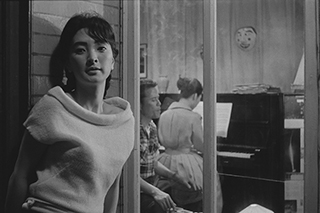
HOUSEMAID, THE
HANYO
Director: Kim Ki-Young
WRITTEN BY: Kim Ki-Young
EDITING: Kim Ki-Young
DIRECTOR OF PHOTOGRAPHY: Kim Deok-jin
PRODUCER: Kim Young-chul
MUSICAL DIRECTOR: Han Sang-Ki
ART DIRECTOR: Park Seok-in
STARRING: Lee Eunshim (Housemaid), Kim Jin-kyu (Dong-sik), Ju Jeung-nyeo (Dong-sik’s wife), Um Aeng-ran (Cho Kyung-hee)
COUNTRY OF PRODUCTION: South Korea
LANGUAGE: Korean with English subtitles
COLOR INFO: Black and White
RUNNING TIME: 110 minutes
PRODUCTION COMPANY: Korean Munye Films Co., Ltd.
PRODUCER: Kim Young-chul
Restored in 2008 by the Korean Film Archive (KOFA), in association with The Film Foundation's World Cinema Project and HFR-Digital Film laboratory. Additional restoration funded by Armani, Cartier, Qatar Airways and Qatar Museum Authority.
Kim Ki-young’s Hanyo, or The Housemaid, is one of the true classics of South Korean cinema, and when I finally had the opportunity to see the picture, I was startled. That this intensely, even passionately claustrophobic film is known only to the most devoted film lovers in the west is one of the great accidents of film history. I’m proud that the World Cinema Foundation is participating in the restoration and preservation of this remarkable picture. I am eager for more people to get to know and love The Housemaid.
–Martin Scorsese, February 2008
NOTES ON THE RESTORATION:
Hanyo has been restored digitally by the Korean Film Archive (KOFA) with the support of the World Cinema Foundation. The original negative of the film was found in 1982 with two missing reels, 5 and 8. In 1990 an original release print with hand-written English subtitles was found and used to complete the copy. This surviving print was highly damaged, and the English subtitles occupied almost half of the frame area. The long and complex restoration process has involved the use of a special subtitle-removal software and included flicker and grain reduction, scratch and dust removal, color grading.
Image: © Courtesy of Korean Film Archive

TREASURE, THE
NIDHANAYA
Director: Lester James Peries
WRITTEN BY: Tissa Abeysekera
EDITING: Lester James Peries, Edwin Leetin, Gladwyn Fernando
DIRECTOR OF PHOTOGRAPHY: M.S. Anandan
ADAPTED BY: G. B. Senanayake
MUSICAL DIRECTOR: Premasiri Khemadasa
ART DIRECTOR: J.A. Vincent Perera
STARRING: Gamini Fonseka, Malani Fonseka, Saman Bokalawala, Francis Perera, Mapa Gunaratne, Shanthi Lekha, Trilicia Gunawardene, Thilakasiri Fernando, J.B.L. Fernando, Thalatha Gunasekera, Kumarasinghe Appuhamy, K.L. Coranelis Appuhamy, Barry Whittington, Wijeratne Warakagoda
COUNTRY OF PRODUCTION: Sri Lanka
LANGUAGE: Sinhala
COLOR INFO: Black and White
RUNNING TIME: 108 minutes
PRODUCTION COMPANY: P.E.E. Anthonypillai for Ceylon Studios
Restored in 2013 by Cineteca di Bologna/L'Immagine Ritrovata laboratory, in association with The Film Foundation’s World Cinema Project, Lester James and Sumitra Peries, the National Film Archive of India, the National Film Corporation of Sri Lanka, Cinemas Ltd. Additional restoration elements provided by Degeto Films. Restoration funded by Doha Film Institute.
Nidhanaya is based on a dark tale by G.B. Senanayake and is considered a milestone film that people, even abroad, admire the most, albeit it is atypical of Lester James Peries’ customary family dramas. The story revolves around a psychotic killer yet is an underlying serious political study on the degradation of a class of society. In 1972 this film won the Silver Lion of St Mark at the 33th Venice International Film Festival and was selected as one of the outstanding films of the year, receiving a Diploma at the London Film Festival. It was also voted as the best film of the first 50 years of Sri Lankan cinema.
My most controversial film is Nidhanaya, which received a very positive reception at the Venice Film Festival. The most accurate critics highlighted that, despite its setting in 1911, this film holds a strong social and political value in denouncing the system. The character is trapped between two cultures: the Western/British one and his culture of origin—he is lost between two worlds. Unable to adapt to either one or the other, he absorbs the worse elements of the two cultures; the society changes and he goes insane.
- Lester James Peries
NOTES ON THE RESTORATION:
The restoration of Nidhanaya was made possible through the use of two key elements: a 35mm positive print struck from the original camera negative and held by Degeto Film, and a combined dupe negative preserved at the National Film Archive of India.
The prints were scanned at 4K resolution. After scanning, the image was stabilized and cleaned, and all wear marks were eliminated. Image grading recovered the richness of the original cinematography. The soundtrack was also digitally cleaned and background noise reduction was applied to reduce imperfections without losing the dynamic features of the original. The digital restoration produced a new 35mm internegative.
The World Cinema Foundation would like to thank the following individuals and organizations for their support: G R Padmaraj and Cinemas Ltd, National Film Corporation of Sri Lanka, National Film Archive of India, Shivendra Singh Dungarpur, Ravindra and Sam Randeniya, and Hubert Niogret.
Special thanks to Lester James Peries and Sumitra Peries for facilitating the restoration process.
Image: © Courtesy of National Film Corporation of Sri Lanka
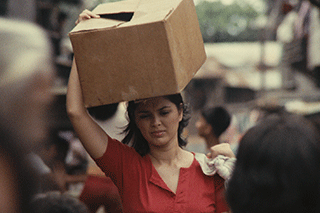
INSIANG
Director: Lino Brocka
WRITTEN BY: Mario O’Hara and Lamberto Antonio
EDITING: Augusto Salvado
DIRECTOR OF PHOTOGRAPHY: Conrado Baltazar
PRODUCER: Miguel De Leon Severino
MUSICAL DIRECTOR: Max Jocson
SOUND: Luis Reyes, Ramon Reyes
STARRING: Hilda Koronel, Mona Lisa, Ruel Vernal, Rez Cortez, Marlon Ramirez
COUNTRY OF PRODUCTION: Philippines
LANGUAGE: Tagalog with French and English subtitles
COLOR INFO: Color
RUNNING TIME: 124 minutes
PRODUCER: Miguel De Leon Severino
Restored by Cineteca di Bologna/ L’Immagine Ritrovata. Restoration funded by The Film Foundation’s World Cinema Project and the Film Development Council of the Philippines.
I’m so pleased that Insiang, the second of the great Lino Brocka’s films that we’ve managed to restore, has been selected for this year’s Cannes Classics: back in 1976, this extraordinary family melodrama was the first picture from the Philippines ever selected for Cannes. Brocka was like a force of nature in world cinema, and Insiang was among his greatest achievements. - Martin Scorsese, May 2015
Insiang is, first and foremost a character analysis: a young woman raised in a miserable neighborhood. I need this character to recreate the ‘violence’ stemming from urban overpopulation, to show the annihilation of a human being, the loss of human dignity caused by the physical and social environment and to stress the need for changes to these life conditions […] My characters always react through fighting. I have conceived Insiang like an immoral story: two women share the same man, the daughter avenges herself and, in the end, she reveals herself: she had conspired to kill her mother’s lover without having ever loved him, so that the murder was, in fact, unnecessary. Censorship refused this ending.” - Lino Brocka
In 1977 I was in Sydney for the film festival. Before going home, I zigzagged my way back through Jakarta, Singapore, Kuala Lumpur, Hong-Kong, Manila and Seoul, to discover a new filmmaker and an unknown film: Insiang by Lino Brocka. When Insiang was released on December 17, 1976, it did not do well, and led to the collapse of CineManila, the company founded by Brocka in 1974 after the extraordinary success of Tinimbang Ka Ngunit Kulang. The shooting of Insiang began on December 1 and lasted 11 days. Knowing these dates is important as they reveal the extreme urgency he felt, and his unique, authentic desire to make this film. Insiang also presents an unusual, brilliant mise-en-scène which shows the characters being torn apart by passion, by a sort of ardent energy. I am very pleased that, two years after Manila in the Claws of Light, Cannes Classics is showcasing another restoration of a Brocka film. I still remember the excitement, along rue Antibes, surrounding the screening of Insiang at the Quinzaine de Réalisateurs, in 1978. That was a very fulfilling and emotional experience, and I’m sure the same will be true today. - Pierre Rissient
NOTES ON THE RESTORATION:
The restoration of Insiang was made possible through the use of the original camera and sound negatives deposited at LTC laboratories by producer Ruby Tiong Tan.
The negative was wet-scanned at 4K resolution and digital restoration was very time-consuming. Some portions of the film, where the negative was intercut to the internegative were extremely damaged and two shots were replaced by use of a 35mm positive print preserved at the BFI National Archive.
Despite an overall acceptable state of preservation, the original optical sound negative presented critical recording issues. The sound restoration required considerable effort to try and solve or minimize the severe metallic hiss and distortions. Several acquisition methods were tested, leaving, however, very little room for improvement.
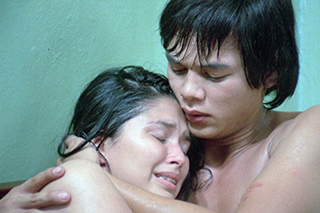
Manila in the Claws of Light
MAYNILA SA MGA KUKO NG LIWANAG
Director: Lino Brocka
EDITING: Edgardo Jarlego, Ike Jarlego
DIRECTOR OF PHOTOGRAPHY: Miguel De Leon
ADAPTED BY: Edgardo Reyes
PRODUCER: Miguel De Leon, Severino Manotok
MUSICAL DIRECTOR: Max Jocson
SOUND: Luis Reyes, Ramon Reyes
ART DIRECTOR: Miguel De Leon
STARRING: Bembel Roco, Hilda Koronel, Rafael Roco Jr., Lou Salbador Jr., Tommy Abuel, Jojo Abella, Juling Badabaldo
COUNTRY OF PRODUCTION: Philippines
LANGUAGE: Tagalog with French and English subtitles
COLOR INFO: Color
RUNNING TIME: 124’
PRODUCER: Miguel De Leon, Severino Manotok
Restored in 2013 by the Film Development Council of the Philippines and Cineteca di Bologna/L’Immagine Ritrovata laboratory, in association with The Film Foundation’s World Cinema Project , LVN, Cinema Artists Philippines and Mike De Leon. Restoration funded by Doha Film Institute.
There are undoubtedly a few people left who still remember that day in Cannes 1978 when rumors started circulating about a small, low budget film from the Philippines. A ‘dirty’ film, as some claimed, once more proving Lu Xun correct when he observed that while some art might originate in the sewer, it can be so full of passion that it goes as deep as tragedy.
And perhaps even further, because Lino was one of the most physical filmmakers that cinema has ever had. A true fireball, he moved insatiably from one set to rehearsals of Larawan in Fort Santiago where he directed a very dedicated group of actors, then on to a TV set where he would shoot a TV show in addition to a film as good as A Streetcar Named Desire.
He possessed a remarkable vitality that was expressed fully in the large demonstrations he organized against Marcos’ regime. With the money he made with his commercial films he bought some sophisticated sound equipment that allowed him to cover the entire Epifanio de los Santos Avenue, Manila’s massive north to south transportation corridor. Lino knew all the arteries of this swarming city, and he penetrated them just as he penetrated the veins of the outcasts in his films. Sometimes a vein would crack open and bleed. And that blood oozed on the screen with Insiang, Jaguar, Bona, Bayanko, all of which were shown in Cannes. And then, just like that, he died, in a stupid, easily avoidable car accident.
I remember a dinner, five weeks after Marcos’ fall, when Lino had realized that the Aquino regime would lead nowhere. He was no longer the same, nor were his films. He even lost his ability to joyfully seize the moment, which he was able to spread around among his friends.
Still, when you watch Manila, you’ll be burned by a flame that never goes out.
-Pierre Rissient, May 2013
A film director can survive in a museum, on a field or in the jungle – first, second or third world. In the third-world jungle he will be judged by his ability to survive, by the way he insists on making committed films and on believing in the power of cinema, even if no one ever asked him to do so. The rest stands on its own two feet. The aesthetics is a consequence.
A third-world filmmaker necessarily has to reinvent his own brand new cinema, squeezed by the rule of immediate profit (tougher in cinema than anywhere else), and the risk of a brutal clash with power. These are the directors who affect us deeply. Satyajit Ray in the 50’s, Ousmane Sembène in the 60’s, Lino Brocka at the end of the 60’s, and again Lino Brocka at the end of the ‘70s and today. [...]
Ultra-fast, fiercely vital, unclassifiable, this little man exists right in the heart of his country. He knows and experiences all the contradictions of Filipino culture and cinema. Brocka is not a solitary hero, he is a public figure; though marginal, exposed, and slandered, he is protected by his fame abroad. He has some key traits in common with Pasolini: a respect for “lower” culture, a feeling for the beauty of the body, a willingness to dissect the social links that the bodies represent.
Brocka loves flinging his characters into the traps of mise en scène, he never turns away when they are overwhelmed by emotion, and once they are cornered, neither can we.
-Serge Daney, 1981
NOTES ON THE RESTORATION:
The restoration of Maynila: sa mga kuko ng liwanag was made possible through the use of the original camera and sound negatives deposited by Pierre Rissient, on behalf of Lino Brocka, at the BFI National Archive in the early 1980s. The state of conservation of the negatives was critical.
The negative was wet-scanned at 4K resolution. The digital restoration process required considerable effort due to the great number of issues affecting the negative: tears, scratches, warping, visible marks and halos.
Color decay was also a significant problem. The film’s cinematographer, Mike De Leon, attentively guided the grading phase and validated a positive print for reference.
Image: © Courtesy of Film Development Council of the Philippines

LAW OF THE BORDER
HUDUTLARIN KANUNU
Director: Lüfti Ö. Akad
WRITTEN BY: Lüfti Akad, Yilmaz G Üney
EDITING: Ali Ün
DIRECTOR OF PHOTOGRAPHY: Ali Uğur
PRODUCER: Dadaş Film, shot in Yildiz Film Studios
MUSICAL DIRECTOR: Ali Uğur
FROM: Dadaş Film
STARRING: Yilmaz Güney (Hidir), Pervin Par (Ayse, the teacher), Hikmet Olgun (Yusuf), Erol Taş (Ali Cello), Tuncel Kurtiz (Bekir), Osman Alyanak (Dervis Aga), Aydemir Akbas (Abuzer), Atilla Erg ün (Zeki, first lieutenant)
COUNTRY OF PRODUCTION: Turkey
LANGUAGE: Turkish with French and English subtitles
COLOR INFO: Black and White
RUNNING TIME: 74 minutes
PRODUCER: Dadaş Film, shot in Yildiz Film Studios
Restored in 2013 by Cineteca di Bologna/L’Immagine Ritrovata laboratory, in association with The Film Foundation’s World Cinema Project, Dadaş Films, and the Turkish Ministry of Culture. Restoration funded by Doha Film Institute.
Turkish cinema in sixties took place in a dream world. The movies of that era refused to look directly at Turkish society. Hudutların Kanunu, on which Yılmaz Güney met director Lütfi Ömer Akad, is one of the movies that changed this state of affairs. Akad’s genuine creative vision influenced Güney’s style as an actor: one can easily see the difference in Güney’s acting before and after Hudutların Kanunu. Akad’s influence was a positive one. . .
Güney’s natural performance marked a change in Turkish Cinema. This was the beginning of what would later be called “New Cinema” in Turkey. With its powerful cinematography and its direct and realistic depiction of social problems, Hudutların Kanunu is one of the early milestones of Turkish cinema. Given the manner of storytelling and the style of photography, one might almost say that Akad’s film is a Western.
Hudutların Kanunu depicts vital problems in the society of South East Turkey. Lack of education, no agriculture, and unemployment compelled people to live by the “law of the border” (Hudutların Kanunu) – in other words, smuggling. Hudutların Kanunu underlines the importance of education, which is the crucial element of socio-economical progress in third world countries. It also helps us to understand the reasons behind the ongoing, veiled war along Turkey’s South East border. Forty five years ago, Lütfi Ömer Akad was alerting Turkish society of the likely consequences if preventive measures are not taken in time. He alerted us with a great and lasting film, Hudutların Kanunu.
(Fatih Akin, May 2011)
Ömer Lüfti Akad’s Hudutların Kanunu comes as a revelation to first-time viewers – a work of great visual and dramatic force, of terrific purity and ferocity. It was made during the year that its star and co-screenwriter, Yilmaz Güney, made his own directing debut. And it’s not surprising for first time viewers to learn that this stunning collaboration marked a shift in Turkish cinema, and ushered in what became known as “the director generation.” Once again, the World Cinema Foundation’s advisory board member Fatih Akin has brought us a great and inspirational film.
(Kent Jones, May 2011)
NOTES ON THE RESTORATION:
The restoration of Hudutlarin Kanunu was made possible through the use a positive print provided by Nil Gurpinar, daughter of the film’s producer, and held by the Turkish Ministry of Culture.
As this print is the only known copy to survive the Turkish Coup d’Etat in 1980 – all other film sources were seized and destroyed – the restoration required a considerable amount of both physical and digital repair. The surviving print was extremely dirty, scratched, filled with mid-frame splices and sadly missing several frames. Although the film was shot in black and white, it was also printed on color stock resulting in significant decay. The restoration work produced a new 35mm dupe negative.
The World Cinema Foundation would like to specially thank Fatih Akin for recommending this title, and Ali Akdeniz and Nurhan Sekerci for facilitating the restoration process.
Image: © Courtesy of Nil Gurpinar - Dadaş Films
